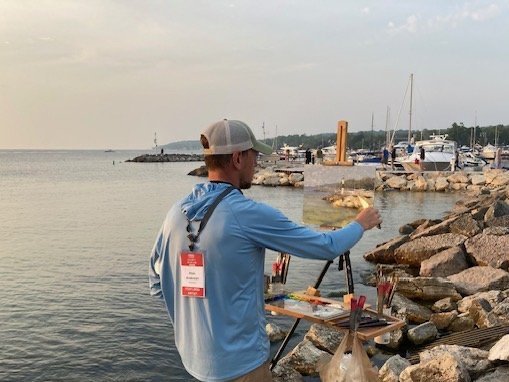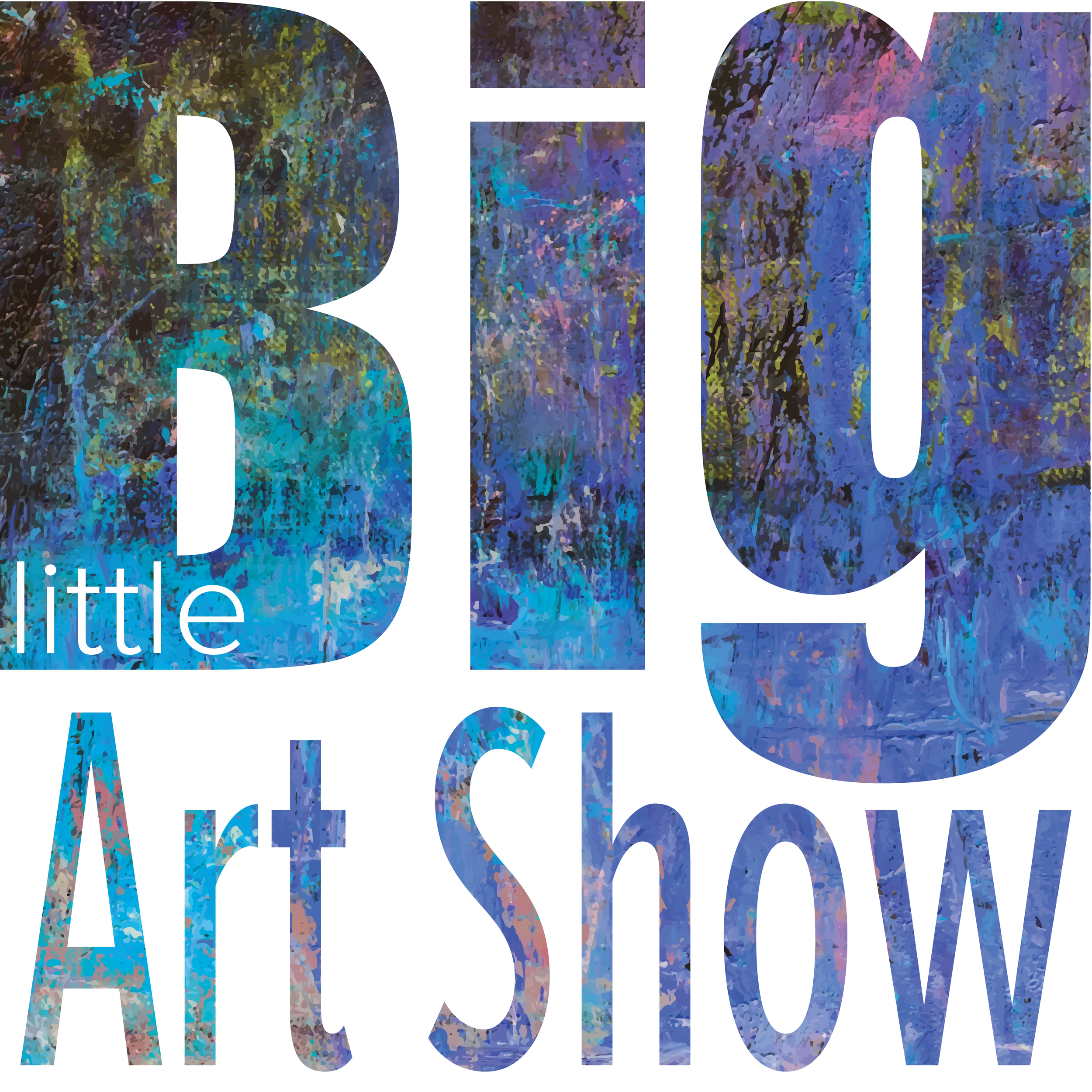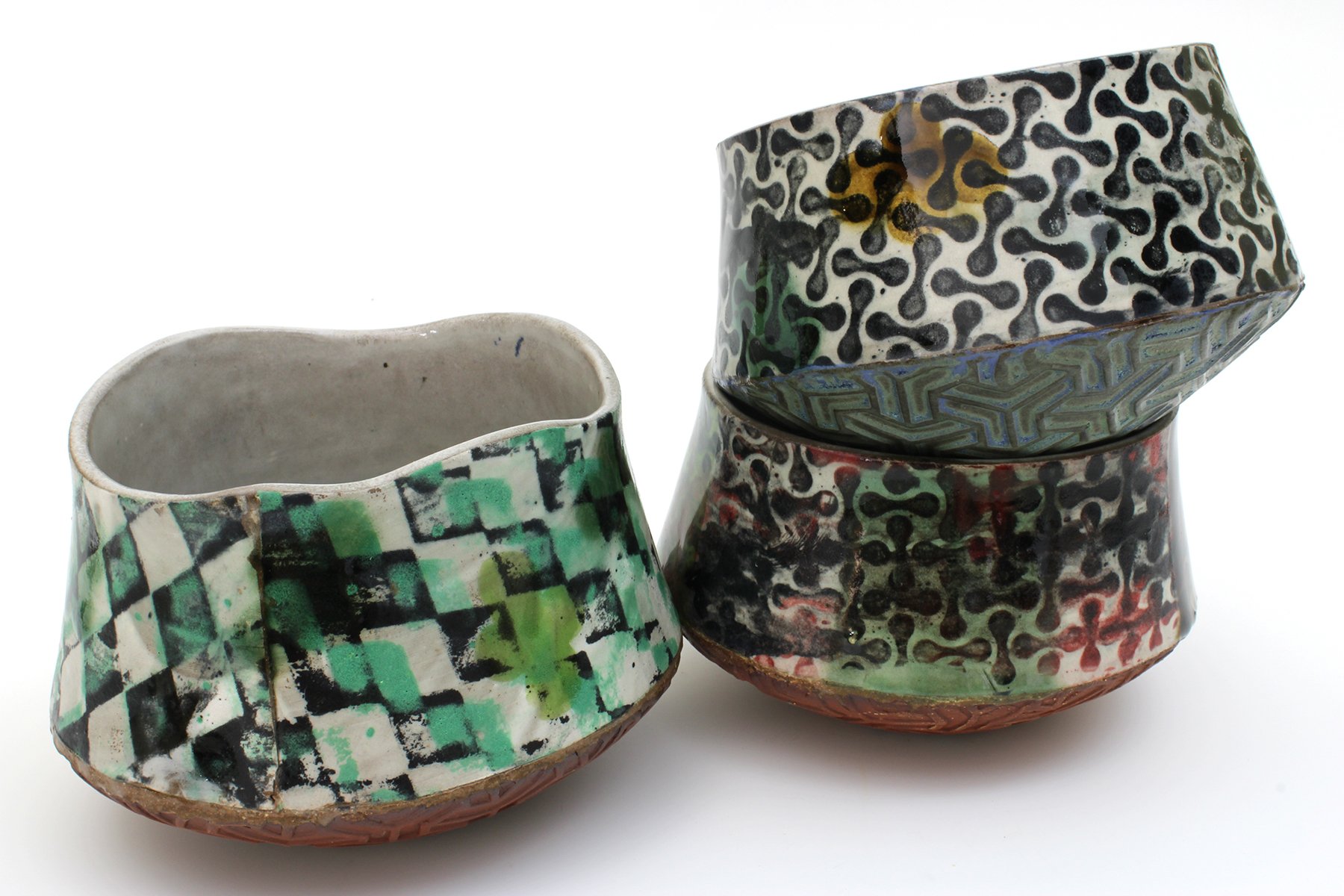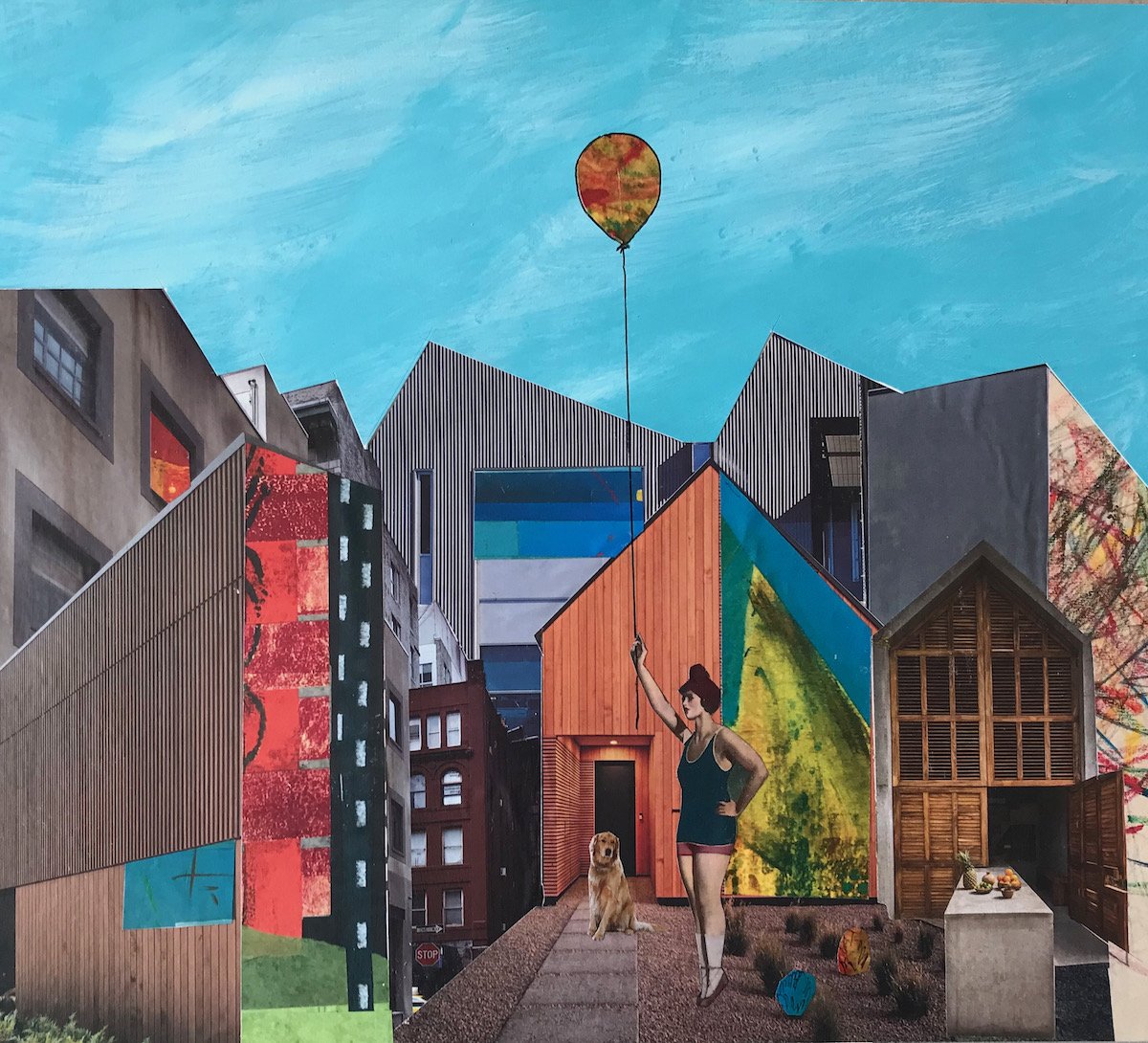
Upcoming Events and Exhibitions

2025 Spotlight Exhibition Series featuring Michael Koerner and Yicong Li
2025 Spotlight Exhibition Series featuring Michael Koerner and Yicong Li
Curated by Shane McAdams
Through the Spotlight Exhibition Series, Peninsula School of Art intends to provide career development and experience for visual artists and to share high-quality, concept-driven exhibitions with the Door County community. Instead of the thematic group exhibitions normally presented in the Guenzel Gallery, the Spotlight Series features concurrent solo exhibitions by two or three artists, each showing a complete body of work. The spring of 2026 marks the next installment in this series.
RISE & FALL, is an interdisciplinary exploration and social commentary on the profound effects of isolation, insularity, and shortsightedness.
The thirteen drawings shown here are the sum of my recent sabbatical from Indiana University, taken while living and practicing as an artist in a rainforest on the Southwest Coast of Vancouver Island. I initially only knew that I wanted to make drawings with things falling from the sky in relation to insularity, which is defined by Oxford as: “ignorance of or a lack of interest in culture, ideas, or peoples, outside of their own experience”. Cambridge defines insularity as: “the quality of only being interested in your own country or group and not being willing to accept different or foreign ideas”. To get the ball actually rolling for producing work though, and with a sly nod to Chicken Little, I developed a construct that stated if a composition consists of things falling from the sky, then it implies that they’ve risen at some point, to be in the position to fall.
I ended up focusing on a variety of culturally relevant topical issues; the triptych
Timber! | Forest Fall | The Perpetual State of Flying Around in Circles specifically addresses deforestation. While I had naturally been aware of old-growth deforestation blighting the island in advance of my stay, there is no substitute for experiencing something directly. It’s this sentiment that drives my research into how humans seldom genuinely consider the long-term effects and collateral damage of an action/inaction, empathize with those affected, or collectively take steps towards rectifying an issue, unless the issue is happening on their doorstep. Whether I was negotiating narrow roads with logging trucks or passing desolate sections of clear-cut forests, I couldn’t unsee what was happening or turn a blind eye because it was occurring in front of me. How can we live off of and give to the land without depleting its resources so that the relationship is mutualistic? With cedar being one of the most harvested conifers there, the irony didn’t escape me upon returning to Indiana, to my home made of cedar and stone, that I am part of this narrative too.
In addition to the drawing series, this exhibition includes multiple paint-poured found objects/vessels, collectively titled as The Journey is the Destination. They address the isolation inherent in the COVID-19 outbreak. In the context of a global pandemic, physically traveling anywhere was, for many, off the table. Implications went far beyond the trivial nature of not being able to take a vacation but struck a nerve on a more humanist level when fundamental forms of affection, empathy, and compassion – such as giving a loved one a hug – weren't even possible. As someone whose spouse is an immigrant, my family felt the compounded implications of being separated from our extended family and friends residing across the Atlantic each day. The conceptual aim here is to use the poured color/hue (that needs to be handled carefully as it's seemingly in a liquid state) as a metaphor for the triumph and beauty of our journey at a difficult time when many of us were physically bound to our residences, and our minds were running rampant as we strove to adapt while many passed away each day.
TENDRIL
Threads intertwine like memories, weaving together the seen and the unseen, the personal and the collective. Tendril explores the organic expansion of thought, emotion, and transformation – how the subconscious unfurls like fiber, reaching outward while anchoring within.
Rooted in the meditative act of fiber techniques, my soft sculptures serve as extensions of the body, vessels for introspection, and sites of quiet metamorphosis. Inspired by Nuo Opera’s ritualistic transformation, these forms become masks, veils, and protective skins – barriers and bridges between self and world. As strands knot, loop, and expand, they mirror the way human experiences interlace, forming intricate networks of memory, trauma, and healing.
Like the creeping tendrils of a vine, growth is both delicate and persistent – an entanglement of past and present, subconscious and conscious, individual and collective. These same threads echo patterns found in nature, from the branching veins of leaves to the flowing tentacles of deep-sea creatures. My forms borrow from the organic language of the natural world – coral polyps, mycelial networks, and the soft undulations of aquatic life – blurring the linds between the human body and the living ecosystems that shape us.
Tendril is a space for connection, an unfolding of fibers that bind us not only to ourselves and to each other, but also to the vast, interwoven rhythms of nature.

Nancy Sargent: A Retrospective
Nancy Sargent: A Retrospective
Curated by Adam Erickson and Elysia Michaelsen
Nancy Sargent’s paintings are imbued with exuberance and curiosity. As an artist, she seems to be always moving, always exploring, always evolving. Her retrospective this year at Peninsula School of Art (PenArt) is the culmination of 65 years of creative, perpetual motion. On full display is her masterful grasp of composition and the interaction of color – often balancing a bright palette with intricate patterns and fearless experimentation.
Frequently rendering tight lines and patterns in astonishing detail, she is a careful study of her subjects as well as her craft. At the same time, Nancy embraces a sense of playfulness and is just as ready to shift into loose and expressive gestures. The work on view in Nancy Sargent: A Retrospective demonstrates the unfolding conversation of one artist between abstraction and figuration – weaving back and forth over several decades. In more recent years, the two approaches seem to find harmony within a single composition – florals both rendered and flattened, patterns both referenced and imagined, combined with linear elements to create shifts in perspective among the layers of abstraction and representation.
After rigorous art training in college, Nancy returned to her hometown of Fish Creek to begin her career in art and education. At Gibraltar High School, her alma matter, Nancy was invited to launch the school’s first official art program. She would later open and run an advertising company with her husband, John, in Milwaukee, where the couple raised two children. Upon retirement, Nancy decided once again to make Fish Creek her home. At that time, she was introduced to PenArt, where she continued her artistic development by taking classes in a variety of mediums. The Art School facilitated social connections as well, allowing Nancy to build relationships with a growing network of artists in Door County. She taught a number of classes herself at PenArt, and later joined the board of directors, where she has served as an advocate and ambassador for 30 years.
Nancy is an engaged resident and a dedicated champion of the arts in Door County. She became an artist and art educator despite not having art education in her own early schooling. Through observation and imagination, she creates works that are bold and energetic while also being carefully crafted. She is a fearless and joyful painter whose evolution is never complete, yet one thread that stretches across six and a half decades is a powerful understanding of formalism. She explores and celebrates the creative process as much in her paintings as she does in her life and community.

Of Place
Images by Kasey and Ben Photography
This summer Peninsula School of Art and Peninsula State Park partnered to offer a residency experience that puts both art making and the environment at its center. Inaugural artists Maysey Craddock and Tomiko Jones were invited to explore the state park through the lens of their individual research; discovering new connections in their practices, creating site-responsive works, and gaining a deeper understanding of this particular place and its environmental circumstances. The residency experience culminates in the exhibition Of Place, curated by Shan Bryan-Hanson, featuring work created by Maysey Craddock and Tomiko Jones prior to and during their residency sessions.
Curator’s Statement
Of Place is the culmination of the inaugural Peninsula State Park Artist-in-Residence program, co-sponsored by the Peninsula School of Art and Friends of Peninsula State Park. During the residency, Massey Craddock and Tomiko Jones each created several new works of art, exhibited here in context with pieces from their larger bodies of work.
Maysey Craddock’s paintings on stitched paper bags depict images that draw our attention to the nuanced shapes of tree branches, plant forms, and other intimate details unique to a specific place. She pulls us into the work not by painting distant trees in vast landscapes, but rather by bringing the foliage into the foreground, allowing its presence to fill the picture plane. Her mesmerizing use of color and contrast creates immersive painted worlds: microecosystems that reference the Anthropocene, disappearing wetlands, elegy and entropy.
Craddock’s process involves layers of mediation, from disassembling and reassembling the found paper bags on which she paints to using technology to alter photographic images that are then drawn and painted on the sewn together paper bags. In many ways, the organic and evolving nature of this process reflects the changing landscapes she depicts, the way land is altered by human activity and encroachment.
Tomiko Jones uses the cyanotype process as a means of memorial, to bring attention not only to absence but also to presence, not so much to what remains as to what is. So much of Jones’ work explores loss, both individual and cultural. It’s hard to look at her work and not consider the impact of human carelessness and cruelty. Through the cyanotype process which she has referred to as “a collaboration with sun, wind, and water” she tenderly memorializes animals forgotten or left behind.
Immersed in ritual, her art presents an unhurried way of being in a “grand place,” an antidote to the typical checklist of sites to see. She enters the public lands she visits with an openness that allows her art to unfold over time. She begins with questions rather than answers, and the results are intimate and thought-provoking. The deep care with which she approaches her subjects is palpable, focusing attention on that which is ephemeral and temporal.
Craddock and Jones create art that brings awareness to climate change and related humanitarian crises of our time, and yet they don’t prescribe solutions or posit answers. Rather, they guide us gently to see, to open our eyes, and carefully consider what is before us.
Shan Bryan-Hanson, Curator

Time and Space: A Survey of Artists-in-Residence
Time and Space: A Survey of Artists-in-Residence brings together work from participants in these first few years of our Artists-in-Residence program. Come see what these artists made during their time at PenArt or what new directions their work has taken since.

Kids Create: Art and Light
From shadows, to reflected color, to LEDs powered by electrical circuits, Door County’s upper elementary school students have been learning all about light and the artists who use it. Come see the results in Kids Create: Art and Light.

BIG little Art Show Opening Reception
Be among the first to see the second annual BIG little Art Show! Celebrate the opening with local artists, take in the art while enjoying a complementary drink, and vote for your favorite work!

BIG little Art Show
Peninsula School of Art welcomes applications for the second annual BIG little Art Show, a curated exhibition featuring works up to 12 inches in any dimension. On display November 4–December 23, 2023, the exhibition is perfectly timed for holiday shoppers.

Backstory: The Artist’s Process
We all know that more goes into a work of art than just the materials it’s made of, but rarely do we get to see the ideation, iteration, and preparation that happens before it is finished. Backstory: The Artist’s Process offers a glimpse into the mind of the artist by presenting documentation, reference materials, sketches, etc. alongside the finished work.
Photo by xoMe Studio

Just Add Water
Water-based media have been around for centuries, and new ones are still being developed. Whether it is for the fast drying time, the ease of clean-up, the level of transparency, or health and environmental concerns, more and more painters are turning to water-based media. Just Add Water explores the properties and uses of watercolor, ink, acrylic, flashe, gouache, and casein.

Kids Create: A Message to the Masses
Printmaking, with its intrinsic ability to make multiples, has been used by artists around the world to spread messages for hundreds of years. During field trips to PenArt, Door County students will use a variety of printmaking techniques to highlight their own lives and concerns. The resulting prints will be on display in Kids Create: A Message to the Masses.

BIG little Art Show
It is said that good things come in small packages, and that is surely true of the work in The Big Little Art Show. This season the gallery is full of small works that pack a big punch, curated from an open call for art that is less than 12 inches cubed. Come see the great variety of work by local artists and friends farther afield.

Digital | Analog
Since its inception, digital technology has been seeping into nearly every aspect of our lives. It is no surprise that contemporary artists have come to use this tool in the process of creation. While digital and analog are seen as opposites, the artists in this exhibition use them seamlessly, incorporating digital technology into their process of working with traditional media.

Tradition of Excellence: Japanese Techniques in Contemporary Metal Arts
Curated by Hiroko Yamada, Director of HYART Gallery (Madison, WI), Tradition of Excellence explores a wide range of Japanese metalworking techniques and materials. The exhibit brings together fifty works by Japanese masters, two of whom are Japanese Living National Treasures. The work showcases traditional alloys, patinas, lacquer; techniques such as raising, inlay, lamination, fire gilding, engraving, and enameling; and art forms such as articulated figures.

Dynamic Duos: The Art of Collaboration
When it comes to collaboration, some artists—Jean Claude & Christo, Gilbert & George, Bernd & Hilla Becher—work almost exclusively as pairs while others—Andy Warhol & Jean-Michel Basquiat, Judy Chicago & Miriam Schapiro, Marcel Duchamp & Man Ray—maintain solo practices and team up only on occasion to produce distinct works of art. Dynamic Duos: Art of Collaboration follows the second model. This fall we invited artists to pair up and produce a work of art. By viewing an example of each artist’s individual work alongside the collaborative piece, one can imagine how the latter took shape.

Kids Create: Art of the Machine
Area students explore the physics behind the six simple machines (inclined plane, wedge, lever, wheel and axel, screw, pulley) and how they can be applied to art.

To the Letter: Text in Art
From cubists like Georges Braque collaging newspapers into their still lifes to draw attention to the flatness of the picture plane, to conceptual artists like Lawrence Weiner using language to emphasize ideas over visual forms, to Jenny Holzer’s Truisms confronting societal issues, visual artists have been widely using text since the beginning of the 20th Century. To the Letter examines the different ways artists incorporate text today.

Art by Number
Mathematics, rightly viewed, possesses not only truth, but supreme beauty. — Bertrand Russell, 1919
A 2014 study showed that for mathematicians, looking at an elegant equation activates the same area of the brain activated when others see a beautiful painting. While this study offered scientific proof, the connection between art, beauty, and mathematics has long been evident. Art by Number explores this connection through work resulting from or inspired by mathematics.

On Location: Artist Explore a Sense of Place
What is it about a place that captures our imagination, clings to our memories, and infuses our daily lives? Can its presence be conveyed by careful documentation of dimensions, stories told, the light of a window on a wall, or the ephemera inhabiting it? Though the artists included in On Location take many different approaches, place is central to their art.

2.5D: Breaking the Surface
Artists who typically work in two dimensions—those who are trained in drawing, painting, and print-making—are masters of compressing the three-dimensional world into a flat surface. But, what happens when artists used to working on planes apply their unique perspective to sculpture? 2.5 D: Breaking the Surface attempts to answer this question, presenting work that falls somewhere between image and sculpture.
Old is New: Contemporary Artists Using Historic Techniques
People have been making art for over 100,000 years. Throughout that long history, new materials and techniques were discovered, fell in and out of popularity, and were sometimes nearly forgotten. Old is New presents the work of contemporary artists using historic materials and techniques to speak to today’s culture.








































































